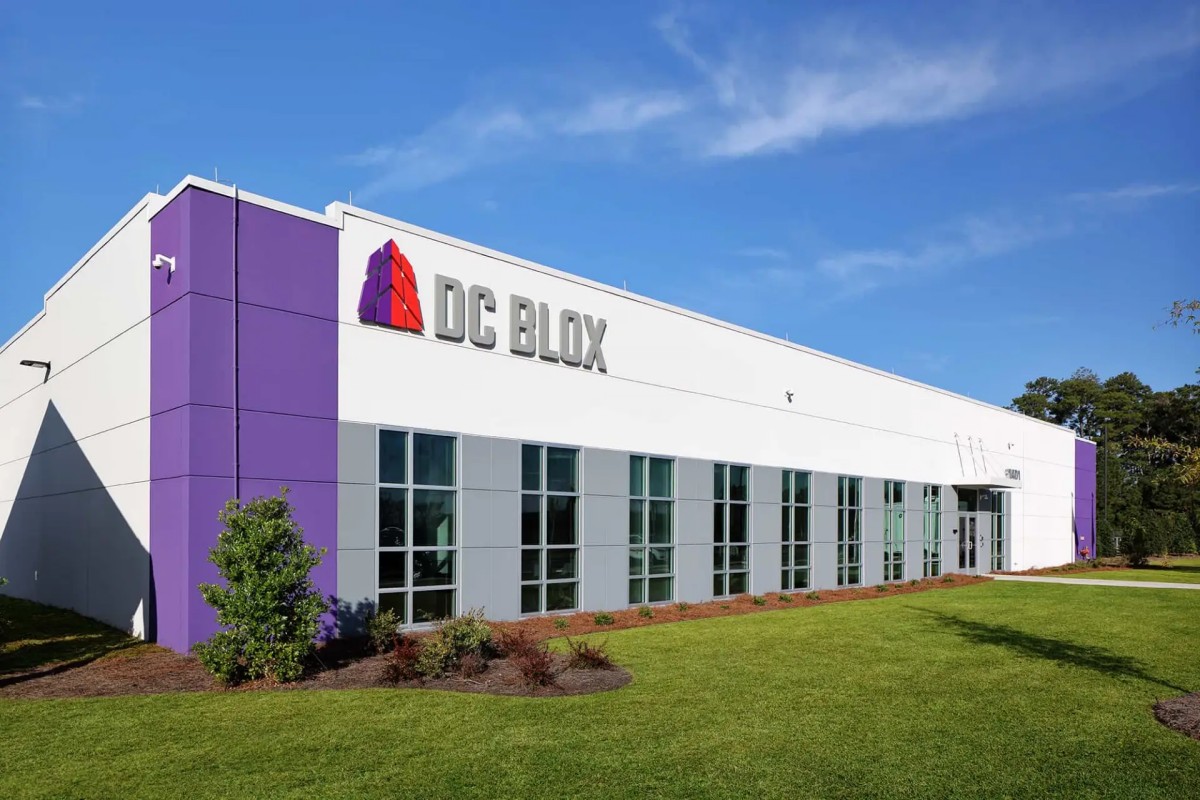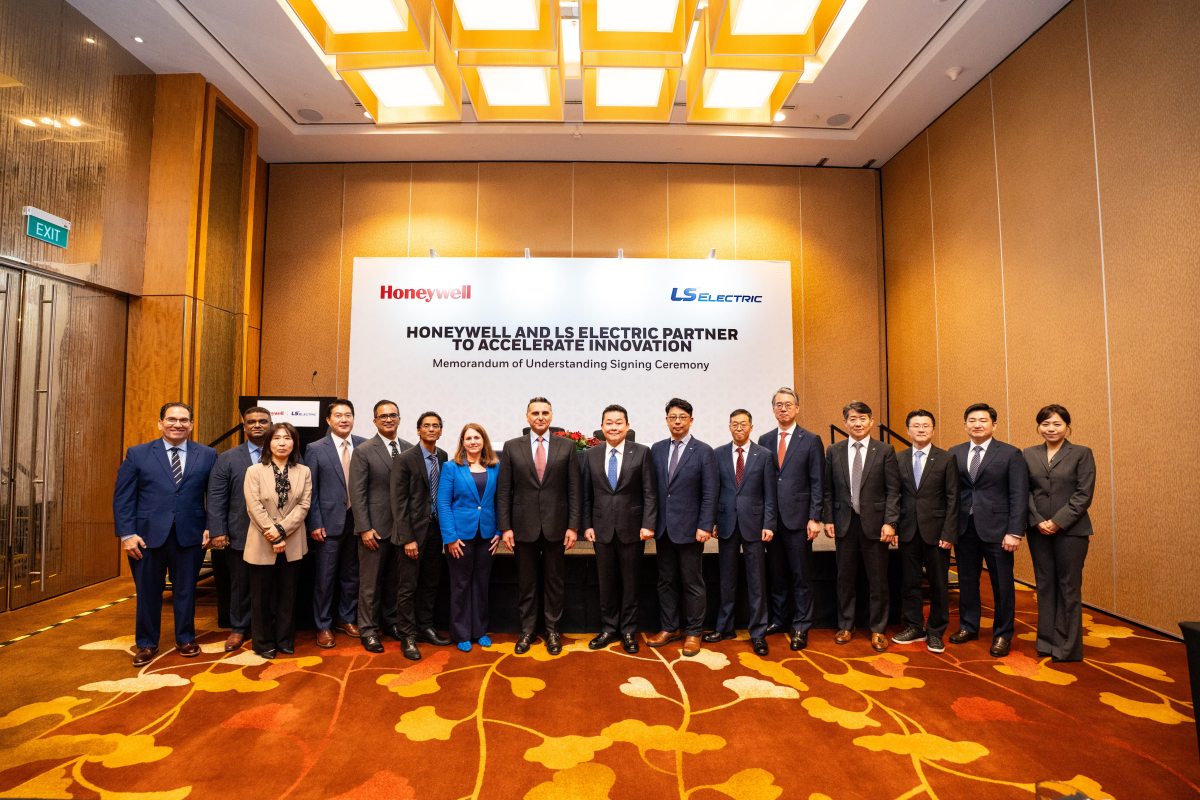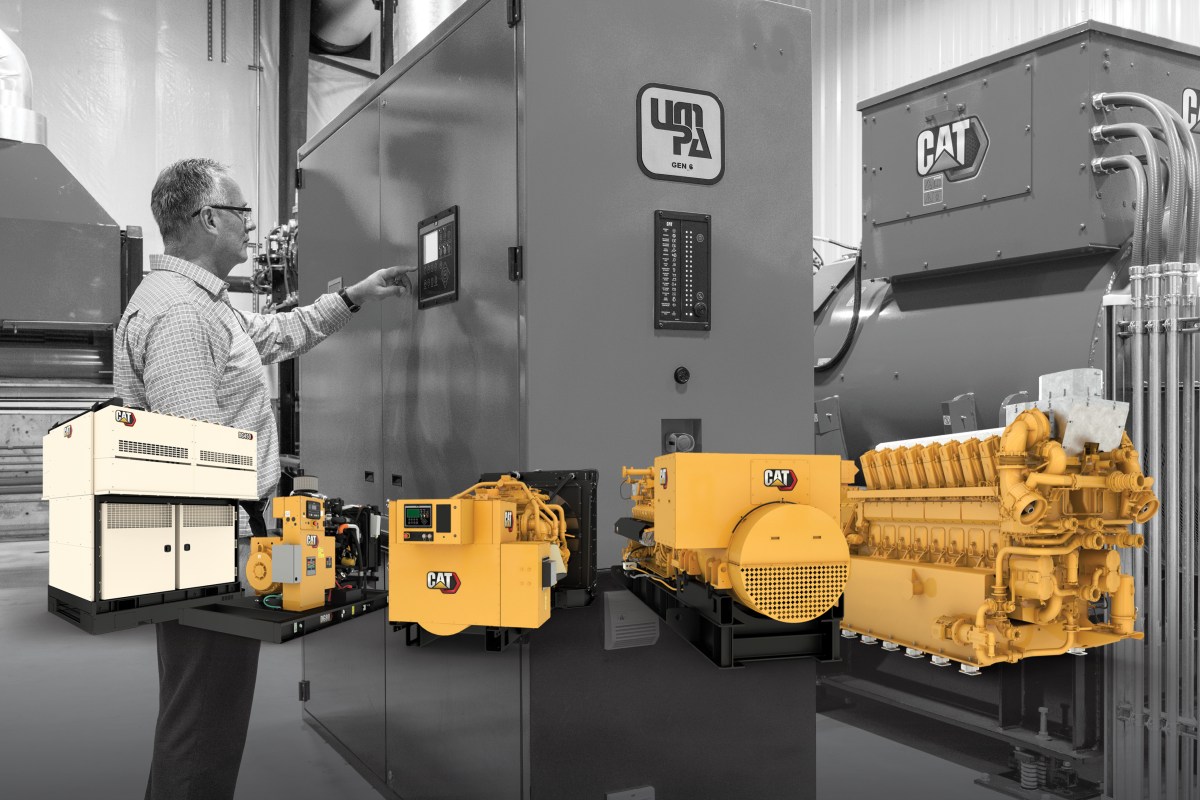Data Centre Infrastructure News & Trends
Data Centre Infrastructure News & Trends
Enterprise Network Infrastructure: Design, Performance & Security
News
DC BLOX to expand Myrtle Beach landing station
DC BLOX, a provider of connected data centre and fibre networks, has announced the planned expansion of its Myrtle Beach cable landing station in South Carolina, USA.
The company has acquired approximately 20 acres of adjacent land within the Myrtle Beach International Technology and Aerospace Park (ITAP) with the potential to accommodate up to five additional subsea cables and an additional 20MW of power from the current on-site substation.
The Myrtle Beach cable landing station (MYR1) opened in 2023 and was developed to enable a resilient international communications gateway for subsea cable access into the southeastern US from western European countries, South America, the Caribbean, and Africa.
MYR1 is the largest facility of its kind on the Eastern Seaboard. MYR2 will complement existing subsea cables already landing in Myrtle Beach (including Firmina, Anjana, and Nuvem), enhancing the region’s role in connecting the US with the world.
Expanding existing connectivity
Jeff Wabik, Chief Technology Officer at DC BLOX, says, “Demand for landing subsea cables in Myrtle Beach has been extraordinary and the rapid addition of new carrier partners into MYR1 has significantly enhanced the facility’s connectivity ecosystem.
“By preparing for MYR2, DC BLOX is enabling new digital infrastructure development across the region by global hyperscale companies and ensuring continued growth of the Southeast’s digital economy.”
Sandy Davis, Myrtle Beach Regional EDC President & CEO, comments, “The continued growth of DC BLOX in our community is the vision presented by their leadership in 2021.
"DC BLOX is an extraordinary company committed to providing technology services and community partnerships as promised. We are excited to have DC BLOX expand in Horry County and to house the largest facility of its kind on the Eastern Seaboard in our county."
Pending additional demand, the new MYR2 facility would be built adjacent to MYR1 within ITAP, a site that offers a solid coastal location for subsea systems.
Once completed, the two facilities combined would support up to ten subsea cables, strengthening international connectivity and advancing Myrtle Beach’s position as a global cable landing destination.
For more from DC BLOX, click here.
Joe Peck - 15 October 2025
Data Centre Infrastructure News & Trends
Innovations in Data Center Power and Cooling Solutions
News
Schneider Electric advances 800 VDC power systems
Schneider Electric, a French multinational specialising in energy management and industrial automation, has outlined its latest developments in 800 VDC power architectures, designed to meet the growing demands of high-density rack systems across next-generation data centres.
The company says the move reflects a broader industry transition towards higher power densities and greater efficiency, as artificial intelligence (AI) workloads drive increased compute intensity.
Schneider Electric is developing its approach around system-level design, integrating power conversion, protection, and metering to ensure performance, scalability, and safety.
Jim Simonelli, Chief Technology Officer for Data Centres at Schneider Electric, explains, “The move to 800 VDC is a natural evolution as compute density increases and Schneider Electric is committed to helping customers make that transition safely and reliably.
"Our expertise lies in understanding the full power ecosystem, from grid to server, and designing systems that integrate seamlessly and operate predictably.”
Collaboration with NVIDIA on 800 VDC sidecar
Schneider Electric is working with NVIDIA to develop an 800 VDC sidecar capable of powering racks of up to 1.2 MW.
The sidecar is designed to support future generations of NVIDIA GPUs and accelerated computing infrastructure by converting AC power from the data centre into 800 VDC.
According to Schneider Electric, the design enables safe and efficient megawatt-scale rack power delivery while helping to minimise infrastructure and material costs. The sidecar includes:
• Modular power conversion shelves• Integrated short-term energy storage for load smoothing and backup• Live Swap capability for safer maintenance• High energy efficiency
The company says the development reflects its wider 'system-level' approach, which focuses on the complete power infrastructure rather than isolated components.
This includes optimising conversion technology, intelligent metering, and integrated protection systems to improve operational efficiency and support scalable, high-density deployments.
Safety, reliability, and validation
Schneider Electric reports that its 800 VDC power systems are backed by extensive modelling, simulation, and testing. This includes fault current and arc flash analysis, as well as certified laboratory environments designed to replicate real-world conditions.
The company’s safety and validation processes are aimed at ensuring predictable performance, simplified maintenance, and operational resilience, which are all key factors for facilities deploying high-density AI and high-performance computing racks.
Dion Harris, Senior Director of HPC, Cloud, and AI Infrastructure Solutions GTM at NVIDIA, says, “Scalable power architectures are the foundation for next-generation AI infrastructure that maximises both performance and efficiency.
"NVIDIA and Schneider Electric are building on our longstanding partnership to design and deliver advanced 800 VDC power systems that will support AI applications driving the industrial AI revolution.”
For more from Schneider Electric, click here.
Joe Peck - 14 October 2025
Data Centre Build News & Insights
Data Centre Infrastructure News & Trends
Data Centre Projects: Infrastructure Builds, Innovations & Updates
Enterprise Network Infrastructure: Design, Performance & Security
Fibre overlooked in UK, delaying 82% of DC projects
Neos Networks, a UK-based B2B connectivity provider, today revealed that 82% of UK data centre operators have delayed site builds or expansion due to fibre availability.
95% of these operators say that access to new, high-capacity fibre networks will now influence their expansion plans.
The findings come from new research showing that, despite unprecedented government and enterprise momentum around data centre development and artificial intelligence (AI), fibre remains the critical bottleneck that could slow the UK’s digital growth.
However, Neos says the industry is united on the solution: investment in new, high-capacity fibre backbones.
The study, carried out in partnership with Censuswide, surveyed data centre operators, enterprise IT leaders and local government stakeholders. Across all three groups, there was a consensus that core fibre networks are the foundation of the UK’s AI infrastructure:
• 89% of local government stakeholders report that fibre gaps have delayed infrastructure projects in their regions.
• Almost half (45%) of enterprises cite fibre as the key bottleneck holding back AI and digital infrastructure.
• Almost half (46%) of local government authorities say their region’s fibre infrastructure is not fully ready to support AI data centres.
• One in six companies (16%) doubt the ability of the UK’s current fibre infrastructure to support their AI ambitions.
Lee Myall, CEO of Neos Networks, comments, “Over the past decade, we’ve seen a huge amount of investment in last-mile fibre builds, but core fibre networks across the country have received much less attention. Without them, workloads cannot move between data centres, data cannot be trained, and investments stall.
"The UK has the ambition, the demand and the regional readiness to lead in AI, but if we don’t address fibre gaps, we risk losing out on one of the greatest economic opportunities of our generation.”
AI is reshaping data centre and digital strategy
The UK government has set out its ambition to position the country as a global leader in AI, with initiatives such as AI Growth Zones in the AI Opportunities Action Plan central to this vision. The research shows these policies are already shaping investment and strategy across the ecosystem:
• 96% of data centre operators say AI Growth Zones are influencing expansion and site selection, with 44% citing them as a strong influence.
• 68% of enterprises view AI Growth Zones as a strong driver of change in their infrastructure planning.
Importantly, this momentum is fuelling new growth corridors beyond London.
While 23% of data centre operators still expect new investment in Greater London, a greater share pointed to the North of England and the Midlands (39%), signalling a shift towards regional hubs of AI activity.
This diversification is mirrored in the way compute is being deployed.
With data centre sites becoming more dispersed, almost all (97%) data centre operators expect up to half of their UK compute to move to the edge of the network by 2030, underlining the need for high-performance, resilient fibre across every region.
But despite this momentum, concerns remain:
• 41% of data centre leaders believe the UK’s fibre networks are only partially prepared to support regional AI workloads.
• More than 70% of enterprises feel the UK’s attractiveness for data centre investment needs improvement (53%) or is lagging (17%).
Unlocking opportunity through new fibre backbones
The research highlights a path forward, with new fibre backbone projects critical to unlocking growth. Nearly all respondents agree that investment in high-capacity fibre corridors will transform confidence in the UK’s ability to attract and scale AI projects:
• 95% of data centre operators, 96% of enterprises, and 96% of local authorities say new fibre corridors into underserved areas would positively impact AI and data centre growth.
• More than half of local authorities (53%) believe such projects would be transformative for their regions.
Lee concludes, “AI is no longer a future ambition; it’s here today, reshaping how businesses, communities, and governments operate.
"But the UK cannot lead in AI on yesterday’s infrastructure and we need continued investment in the fibre backbones that connect every region of the country.
"At Neos, we’re committed to building those foundations so the UK can not only keep pace, but compete and thrive in the global AI race.”
For more from Neos Networks, click here.
Joe Peck - 14 October 2025
Data Centre Infrastructure News & Trends
Enterprise Network Infrastructure: Design, Performance & Security
News
GNM launches new PoP in Paris
GNM, a backbone internet provider and telecom operator, has launched a new Point of Presence (PoP) at 137 Boulevard Voltaire in Paris, expanding its Western European footprint and giving French operators direct access to its backbone and interconnection services.
The company says that strong growth in France over the past year drove the decision to expand into the capital.
The Paris site connects regional operators with lower-latency routes to Frankfurt, Amsterdam, London, and Central Europe, integrated with GNM’s 20,000 km backbone and 80+ PoPs in 21 countries.
From Paris, GNM says it offers services including IP Transit with Tier-1 upstreams and advanced BGP community control; GNM-IX peering, with more than 650 connected networks; Ethernet / L2VPN with SLAs and end-to-end traffic control; and Remote IX for access to European Internet Exchanges without physical presence.
Ahmed Eidarous, International Development Manager at GNM, comments, “Paris is a natural step in our European expansion.
“By launching a PoP here, we are bringing French operators closer to our backbone and service portfolio, enabling them to exchange traffic more efficiently and access international hubs with minimal latency.”
With the Paris PoP online, GNM says it has both expanded its presence in Western Europe and strengthened connectivity for regional and global customers.
For more from GNM, click here.
Joe Peck - 13 October 2025
Data Centre Infrastructure News & Trends
Data Centre Security: Protecting Infrastructure from Physical and Cyber Threats
Innovations in Data Center Power and Cooling Solutions
Security Risk Management for Data Centre Infrastructure
Sponsored
Uncover the hidden risks in data centre resilience
In July 2024, a lightning arrester failure in Northern Virginia, USA, triggered a massive 1,500MW load transfer across 70 data centres - handling over 70% of global internet traffic.
The result? No customer outages, but a cascade of grid instability and unexpected generator behaviour that exposed critical vulnerabilities in power resilience.
Powerside’s latest whitepaper - entitled Data Centre Load Transfer Event – Critical Insights from Power Quality Monitoring - delivers a technical case study from this unprecedented event, revealing:
• Why identical voltage disturbances led to vastly different data centre responses
• How power quality monitoring helped decode complex grid interactions
• What this means for future-proofing infrastructure in 'Data Centre Alley' and beyond
Whether you are managing mission-critical infrastructure or advising on grid stability, this is essential reading.
You can download the full whitepaper by registering below:
[ninja_form id=5]
Joe Peck - 13 October 2025
Data Centre Infrastructure News & Trends
Enterprise Network Infrastructure: Design, Performance & Security
News
LINX achieves 25 x 400GE port count milestone
The London Internet Exchange (LINX), an internet exchange point (IXP) operator, has successfully deployed their 25th 400GE port across their global network, a major milestone within the wider industry's growth.
The first 400GE port was provisioned in 2021, with demand for ultra-high bandwidth connectivity surging since then, driven by the exponential growth in cloud services, video streaming, gaming, and AI workloads.
A single 400GE connection delivers four times the capacity of a standard 1000GE port, enabling networks to consolidate traffic, reduce operational complexity, and build in resilience, future-proofing their infrastructure.
Investing in the future
LINX has invested heavily in Nokia’s next-generation hardware and optical technologies to enable 400GE delivery across its interconnection ecosystems in London and Manchester.
This investment aims to ensure members can scale quickly and efficiently while maintaining the resilience and reliability that underpin the global internet.
Jennifer Holmes, CEO of LINX, comments, “Reaching 25 active 400GE ports is a testament to the evolving needs of our members and the strength of our technical infrastructure.
"We’ve seen a clear shift towards high-capacity services, with our larger delivery networks upgrading first to 400GE.
"In the last 12 months UK ISPs are now seeing the demand for the service and are upgrading in London and Manchester, a positive sign of effective network traffic management or regional peering.
"This evolution demonstrates how network operators of all sizes are adapting to keep pace with the demands of modern digital services.”
As digital transformation accelerates globally, LINX says it continues to extend its reach beyond the UK, also supporting interconnection platforms in the US and Africa.
For more from LINX, click here.
Joe Peck - 10 October 2025
Data Centre Infrastructure News & Trends
Innovations in Data Center Power and Cooling Solutions
News
Honeywell, LS Electric deal to boost data centre power
Honeywell, a US multinational specialising in building automation, has announced a global partnership with LS Electric, a South Korean manufacturer of electrical equipment and automation systems, to develop and market integrated hardware and software systems for power management and distribution in data centres and commercial buildings.
The collaboration aims to simplify the integration of electrical and automation systems, improving operational efficiency, resilience, and energy management for operators of data-intensive and energy-critical facilities.
Integrated approach to power and automation
The partnership combines LS Electric’s experience in power infrastructure with Honeywell’s expertise in building automation and control systems.
Together, the companies plan to offer systems that unify power distribution and building management, ensuring load and capacity are balanced to maintain resilience and uptime.
The first joint products will include integrated switchgear and power management systems that help data centre operators control and distribute power more effectively.
Future development will focus on new electrical monitoring systems using the Honeywell Forge platform, enhanced with AI and analytics, and LS Electric’s software capabilities.
These systems will be designed to regulate energy distribution, improve efficiency, and provide predictive maintenance to reduce downtime and power quality issues.
Energy storage and grid resilience
Honeywell and LS Electric also plan to develop a grid- and building-aware battery energy storage system (BESS) for commercial and industrial buildings.
The modular BESS will integrate LS Electric’s energy storage technology with Honeywell’s dynamic energy control software, allowing users to forecast and optimise energy sourcing and costs based on grid data, weather conditions, and other variables.
The companies said the technology will help manage growing energy demand from sectors such as data centres, which currently account for between 1-2% of global electricity consumption.
Billal Hammoud, President and CEO of Honeywell Building Automation, comments, “Our collaboration with LS Electric supports our continued focus on delivering smarter, scalable solutions for the world’s most critical industries.
"As the global demand for data and energy accelerates, this partnership combines our complementary strengths to deliver intelligent infrastructure that’s both resilient and efficient.”
JongWoo Kim, President of LS Electric Power Electric, adds, “Building on our expertise in power infrastructure and energy storage systems, we are expanding globally into the data centre and industrial building markets.
"Through our collaboration with Honeywell, we will provide solutions that help large-scale operators achieve both energy efficiency and reliability.”
For more from Honeywell, click here.
Joe Peck - 9 October 2025
Data Centre Infrastructure News & Trends
Innovations in Data Center Power and Cooling Solutions
Sponsored
The shift from standby to strategic energy management
In this article, Laura Maciosek, Director Key Accounts at Cat Electric Power Division, talks about why shifting backup assets into primary power is becoming essential as grid constraints intensify:
It’s safe to say the energy landscape is changing, with many prominent and significant changes having taken place in the last 24 months. The data-driven society we live in, from streaming devices and smart appliances to AI processing, continues to move demand for data centres in just one direction: up.
As data centres experience this growth, utility power is no longer a given. Today, there’s no guarantee the local electrical grid can meet these increased power needs. In fact, many utilities I’ve talked with say it’ll be three to five years (or longer) before they can bring the required amount of power online.
That puts data centre customers in a tricky position. How can they continue to expand and grow if there isn’t enough power and moving sites isn’t an option?
The answer includes rethinking power options, and that means considering the transition from using power assets for largely backup purposes to employing them as a primary power source. That’s a big change from the status quo.
If you’re in a similar position, you can read our advice on how to navigate the transition on our blog.
Whether you’re ready to make the switch from standby to prime power at your data centre today – or simply weighing options for your next development or expansion – we’re here to help. We’ll work with you to find the right combination of assets and asset management software that fulfils your power requirements reliably and cost-effectively. Connect with one of our experts to get the process started.
For more from Caterpillar, click here.
Joe Peck - 8 October 2025
Data Centre Infrastructure News & Trends
Enterprise Network Infrastructure: Design, Performance & Security
News
Products
CommScope expands SYSTIMAX Constellation platform
CommScope, a US manufacturer of network infrastructure products, has announced the global availability of its evolved SYSTIMAX Constellation platform, an edge-based system for power and data connectivity designed for large-scale enterprise networks.
Now compliant with international power and data transmission standards, the Constellation platform combines fault-managed power with hybrid power and data fibre cabling in a simplified star topology.
The design enables hundreds or thousands of connected devices to be powered and linked efficiently across buildings or campuses.
Simplified architecture for modern infrastructure
The platform’s modular, technology-agnostic design supports both AC and DC power applications and multiple IT and operational technology (OT) standards.
The company says unlike traditional structured cabling, Constellation removes the need for a telecoms room or wiring closet on every floor, allowing centralised uninterruptible power supply (UPS) management.
Constellation Points (CPs) can be installed in ceilings, walls, or equipment racks, reducing space requirements and component use. The system delivers higher power and faster data speeds over longer distances, supporting 10G and above bandwidth and up to 1kW of fault-managed power.
According to CommScope, the platform can reduce installation labour by more than 50% compared with conventional cabling, while also lowering material use and the network’s overall carbon footprint through reductions in copper and plastic.
Luc Adriaenssens, Vice President of Building and Campus, CommScope Connectivity Solutions, comments, “The Constellation platform enables our customers to support denser urban environments and the growing number of connected devices in their buildings.
"By offering a modular, technology-agnostic solution, we’re providing greater flexibility for network design - allowing scalability, sustainability, and cost efficiency.”
Technical and sustainability features
Part of CommScope’s SYSTIMAX cabling and connectivity range, the Constellation system includes Propel fibre panels, power transmitters, and transition panels connected to CPs via hybrid fibre trunks.
End devices are linked through pre-terminated Cat 6A patch cords and cable assemblies.
Key performance and sustainability metrics include:
• Up to 1,800W of power delivered at distances of 250m• Up to 1,000W at 500m• Up to 700W at 1,000m• Support for 10G and higher data rates• Up to 50 connected devices per CP• 57% reduction in skilled installation labour hours• 59% less copper and 65% less plastic compared with traditional LAN systems• Up to 40% lower embodied network carbon footprint
The Constellation platform is now available worldwide.
For more from CommScope, click here.
Joe Peck - 8 October 2025
Data Centre Build News & Insights
Data Centre Infrastructure News & Trends
Innovations in Data Center Power and Cooling Solutions
Sustainable Infrastructure: Building Resilient, Low-Carbon Projects
A-Gas completes large-scale DC refrigerant recovery project
A-Gas, a company specialising in Lifecycle Refrigerant Management (LRM), has completed a major refrigerant recovery project for a global technology provider, marking a significant environmental milestone for the data centre sector.
More than 73,000 lbs (33,000 kg) of R410A were safely recovered across five buildings containing 222 cooling units scheduled for decommissioning. The work, carried out under challenging summer conditions, prevented the release of greenhouse gases equivalent to 70,226 tonnes of carbon dioxide (CO₂e).
The project was managed by A-Gas Rapid Recovery, the company’s on-site refrigerant recovery division, which specialises in high-speed, compliant recovery operations for commercial and industrial facilities.
Environmental and operational impact
A-Gas said the recovery operation demonstrated its commitment to safe and environmentally responsible refrigerant lifecycle management.
The project not only reduced environmental impact, but also delivered financial benefits to the client through the A-Gas buyback programme.
Rapid Recovery’s process is designed to complete complex projects quickly, with recovery speeds up to 10 times faster than conventional methods, helping reduce downtime during critical infrastructure transitions.
The operation included full Environmental Protection Agency (EPA) documentation, refrigerant analysis, and regulatory compliance checks throughout.
A-Gas said its approach combines global expertise with safety-first practices to help technology and data centre clients meet both operational and sustainability goals.
For more from A-Gas, click here.
Joe Peck - 7 October 2025

Head office & Accounts:
Suite 14, 6-8 Revenge Road, Lordswood
Kent ME5 8UD
T: +44 (0)1634 673163
F: +44 (0)1634 673173









